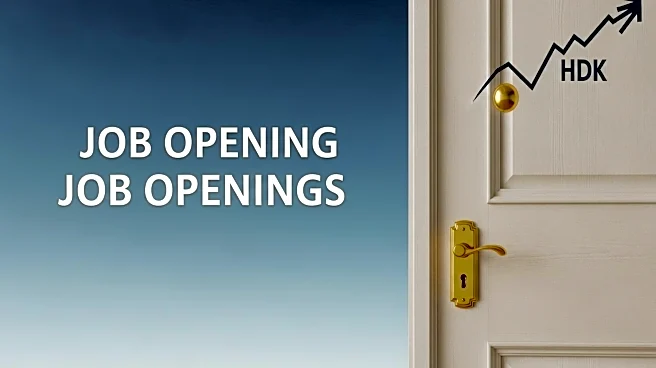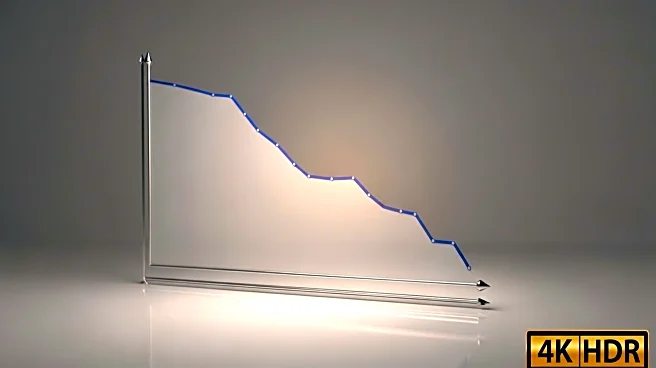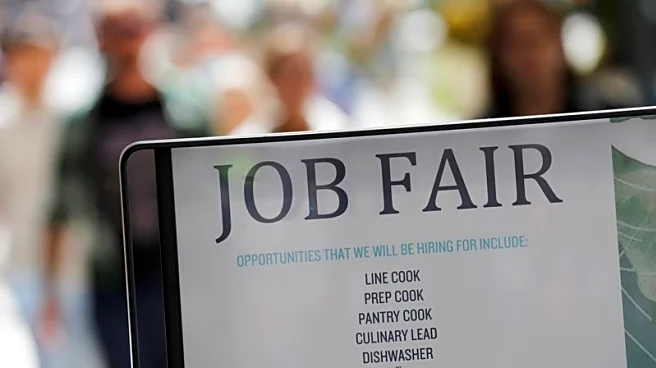What's Happening?
U.S. job openings have decreased to a 10-month low, with more unemployed individuals than available positions for the first time since the COVID-19 pandemic. The Labor Department's report indicates a cooling demand for workers, although layoffs remain low. The job openings rate fell to 4.3% in July, with significant declines in sectors like healthcare and retail. Economists attribute the slowdown to President Trump's import tariffs and immigration policies, which have affected labor supply. The Federal Reserve is expected to consider a rate cut at its upcoming policy meeting, acknowledging labor market risks.
Why It's Important?
The decline in job openings signals a shift in the labor market, potentially impacting economic growth and employment stability. As the Federal Reserve considers monetary policy adjustments, the labor market's health will be a critical factor. Businesses may face challenges in hiring, affecting productivity and expansion plans. The situation also highlights the impact of trade and immigration policies on labor dynamics, influencing future policy decisions. Stakeholders, including workers and employers, must navigate these changes as they adapt to evolving economic conditions.
What's Next?
The Federal Reserve's upcoming policy meeting may result in a rate cut, aimed at addressing labor market concerns and inflation threats. The government's employment report, expected to show modest job gains, will provide further insights into labor market trends. Businesses may need to explore cost-saving measures and workforce adjustments in response to economic pressures. The interplay between policy decisions and labor market conditions will continue to shape the economic landscape, with potential implications for employment and consumer spending.













